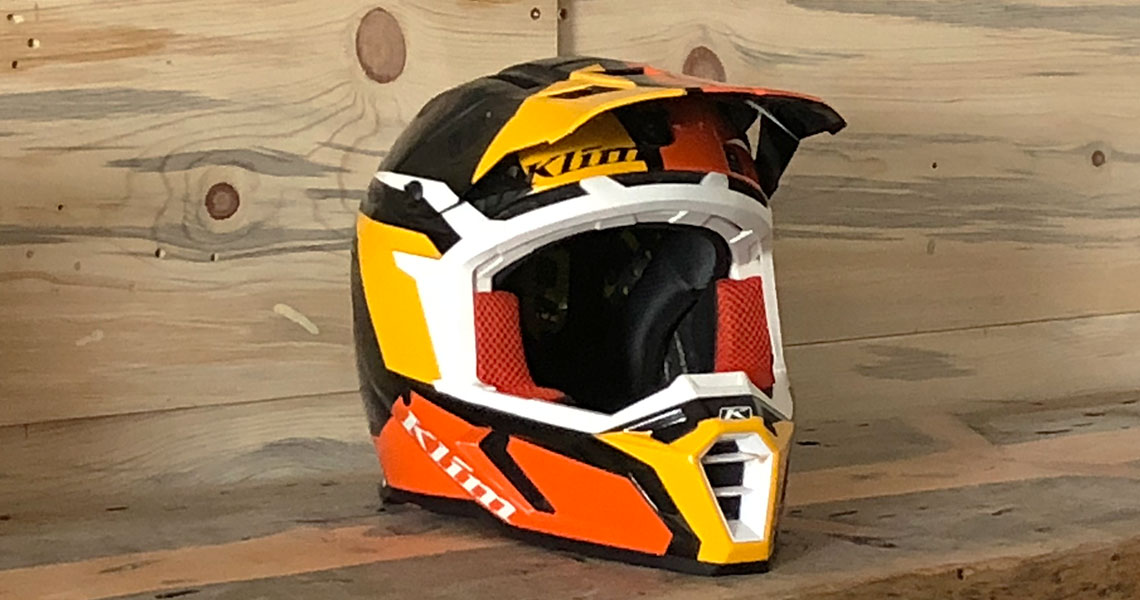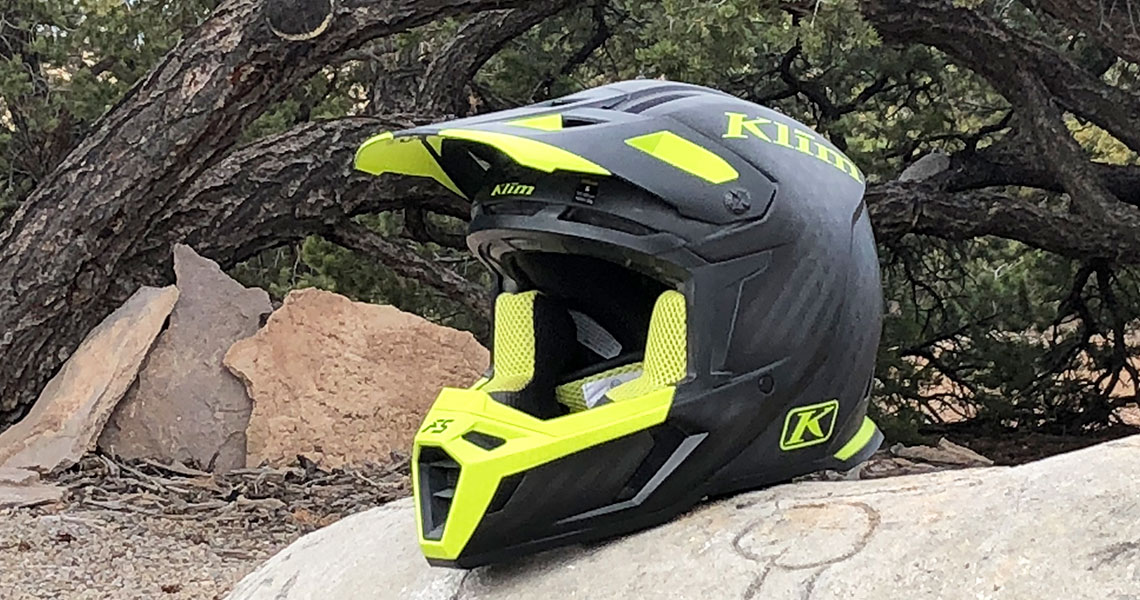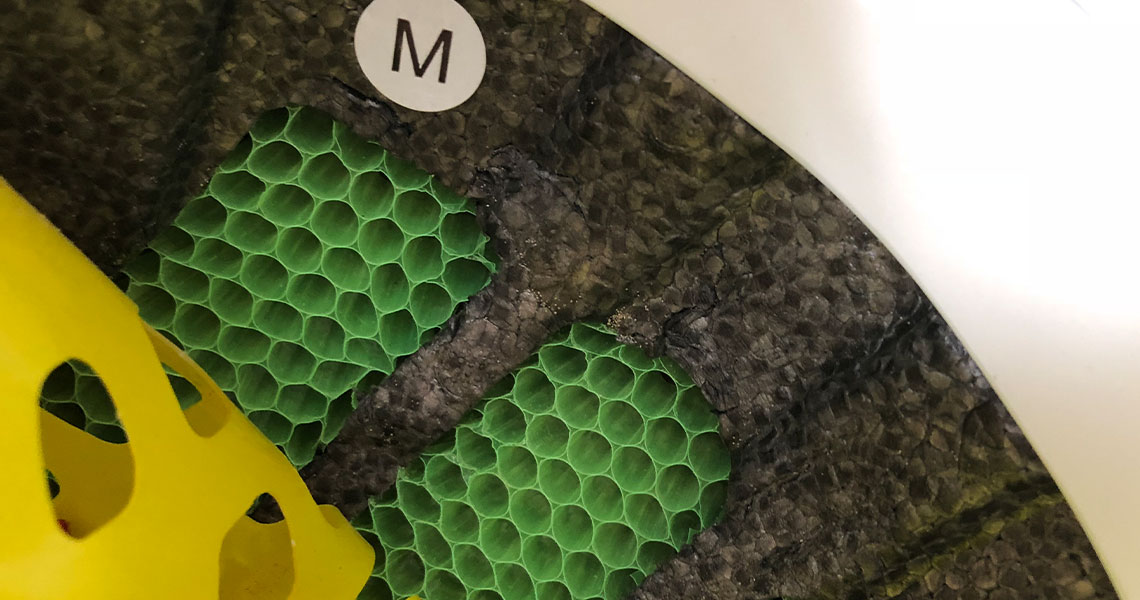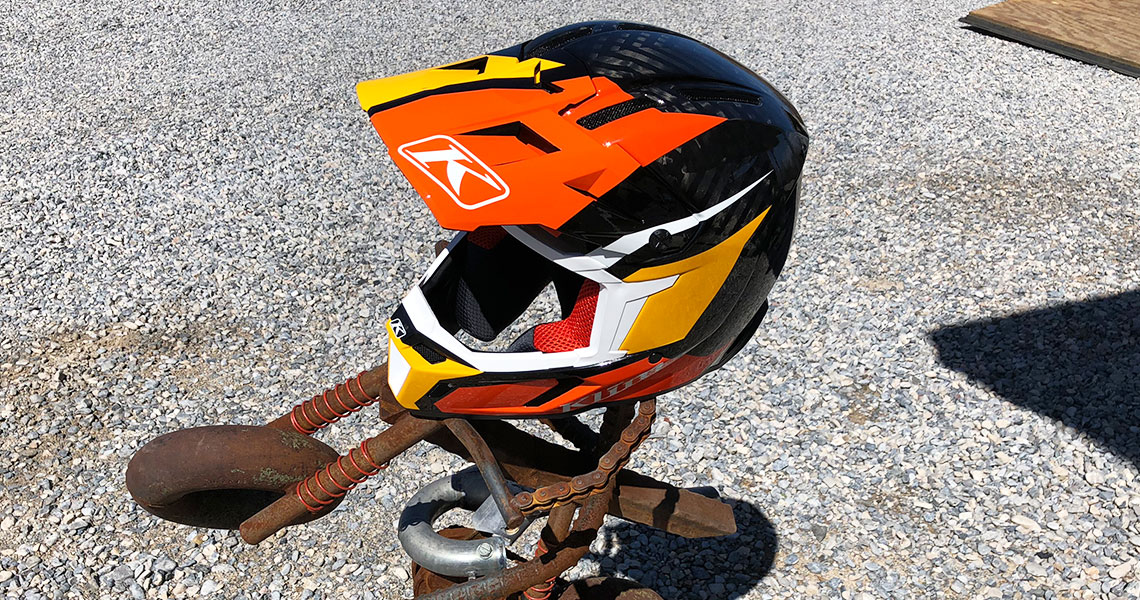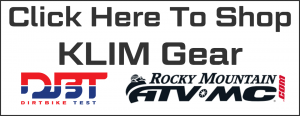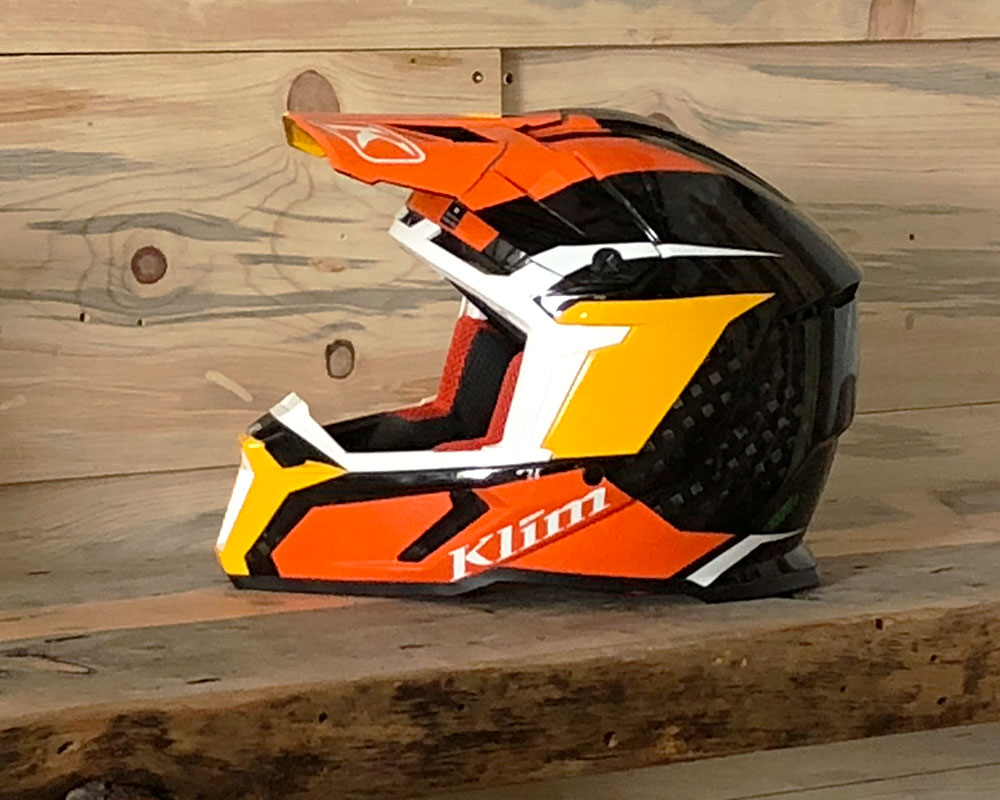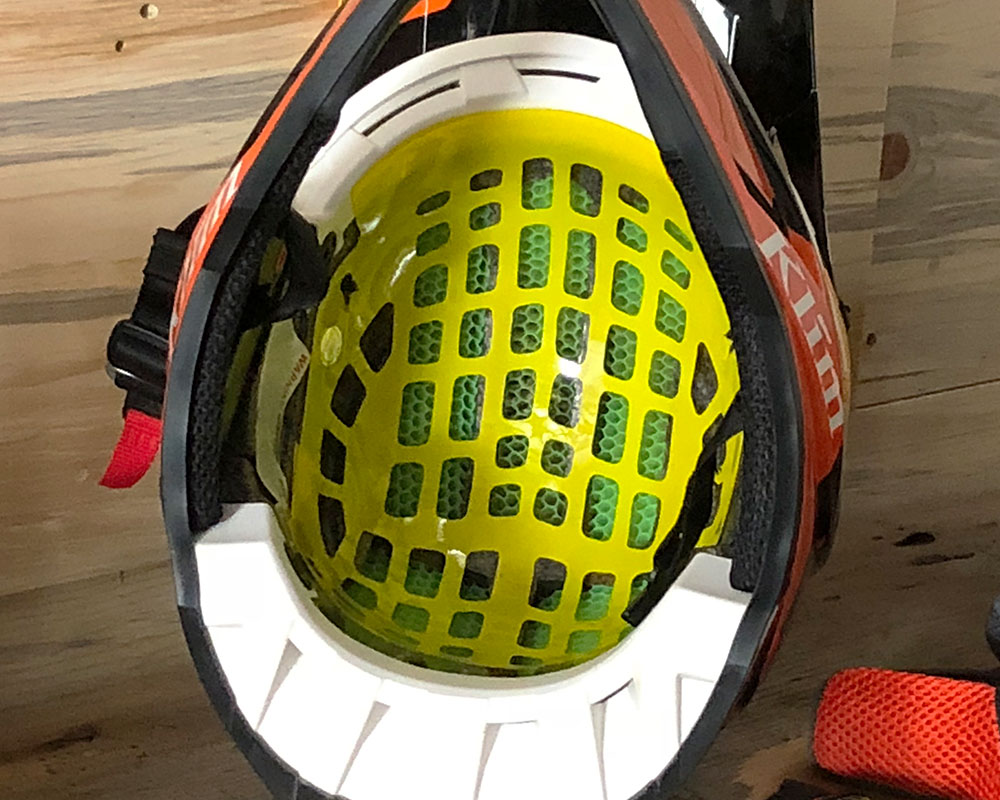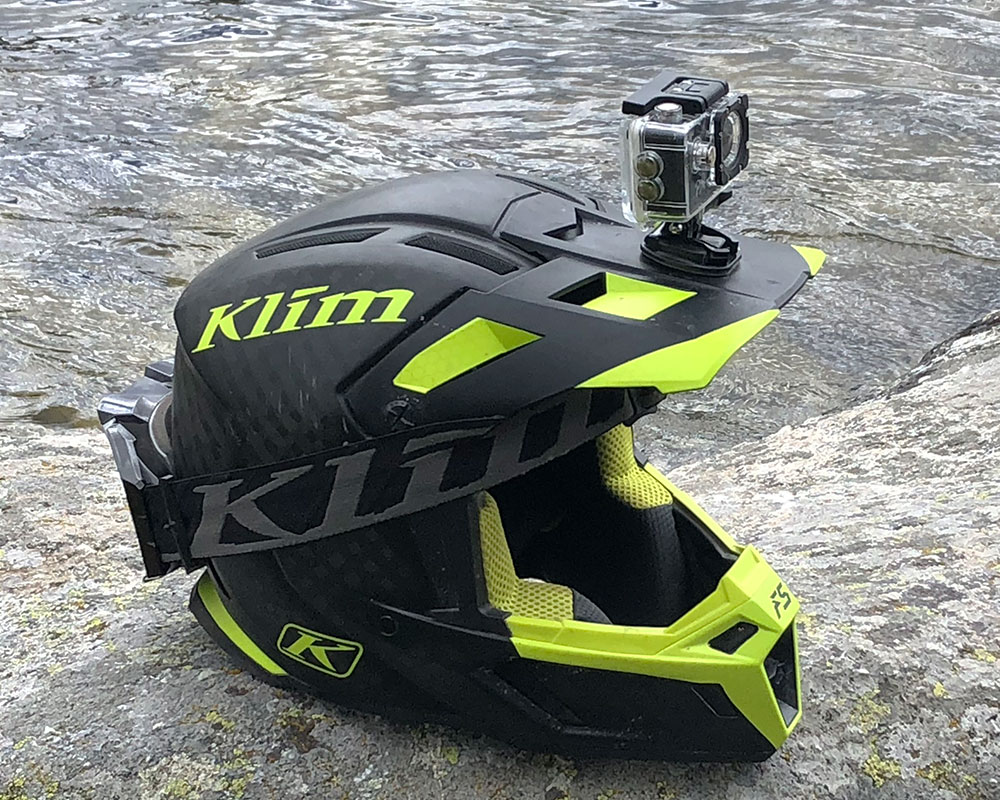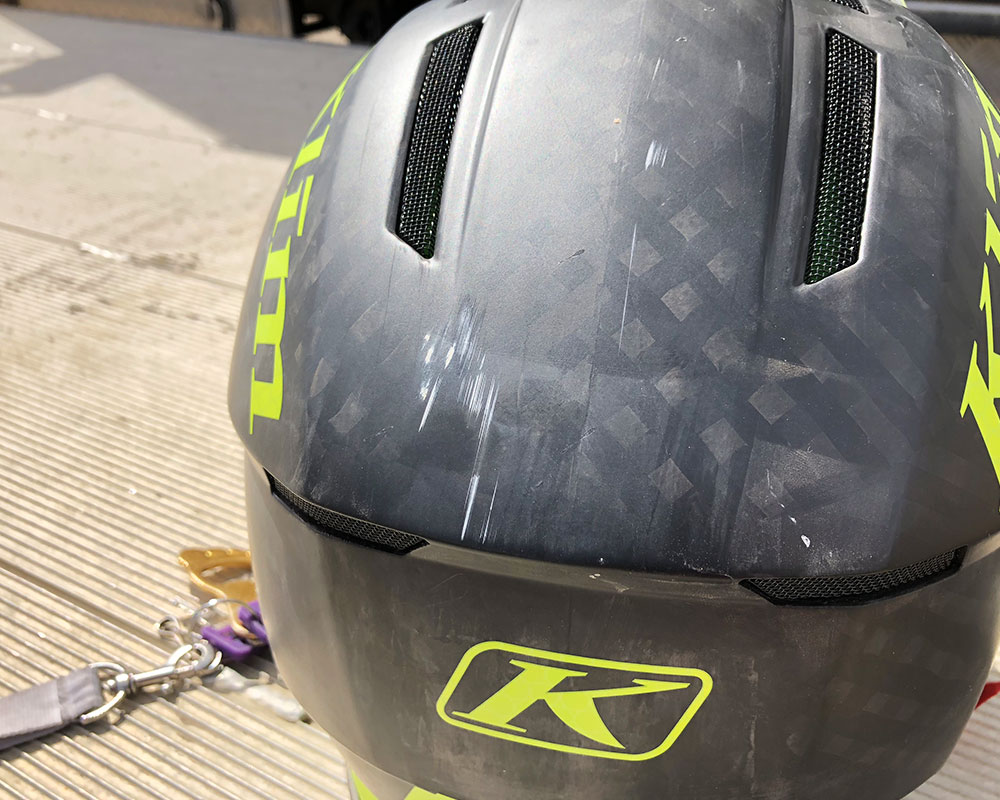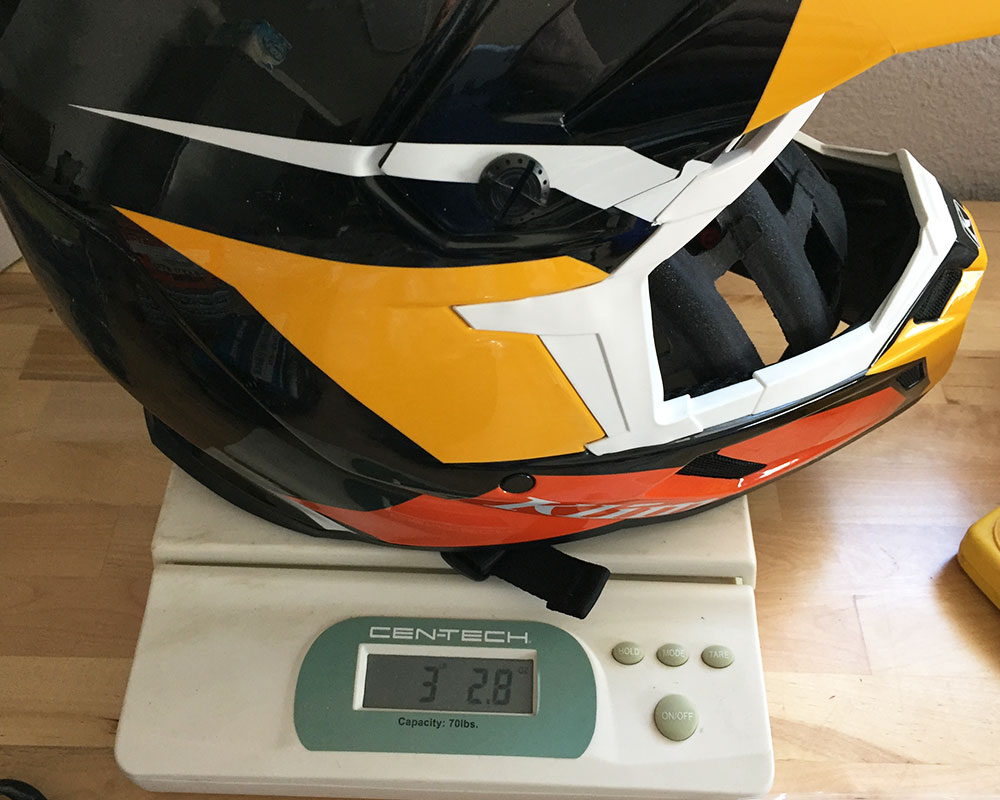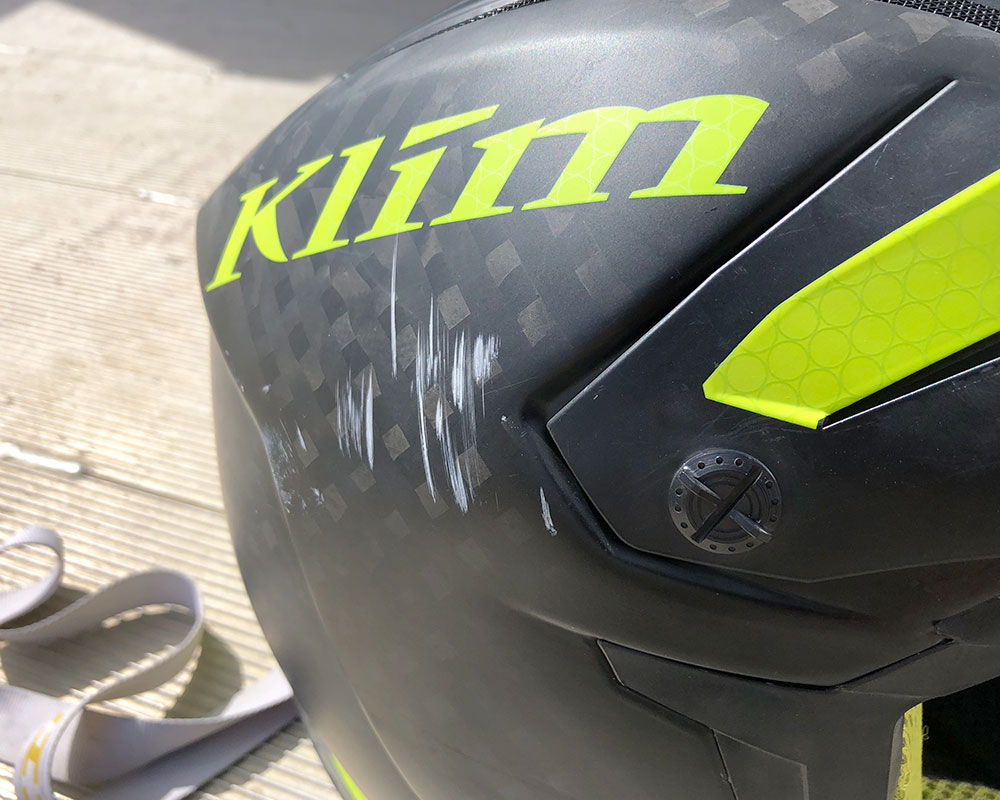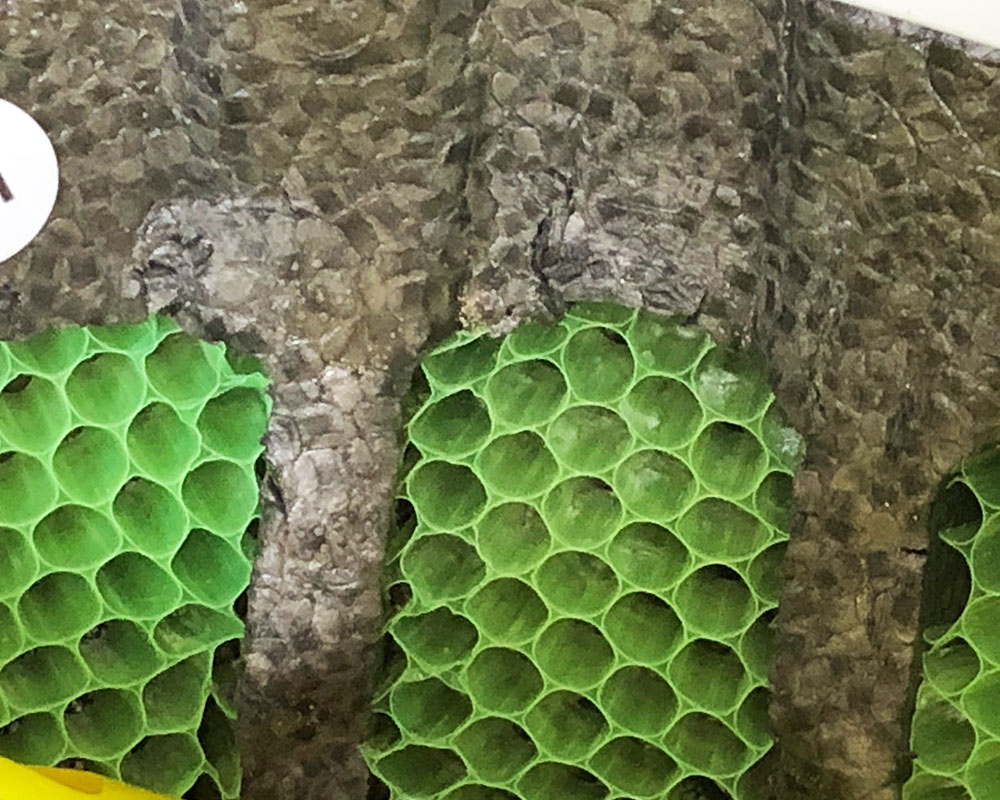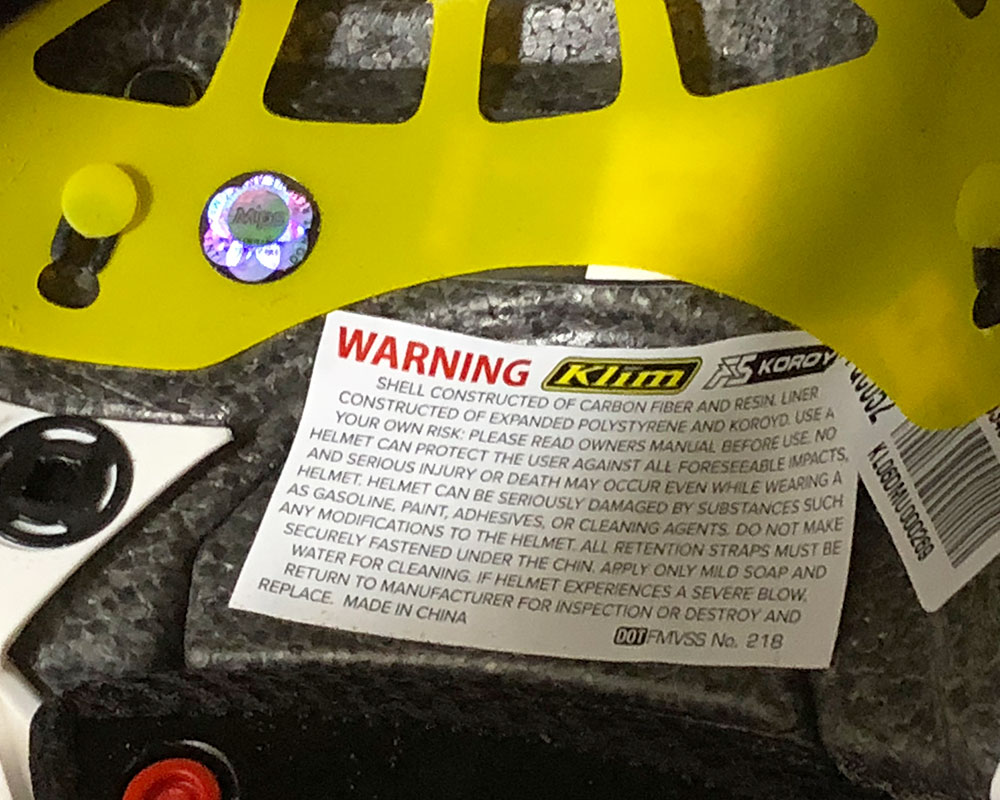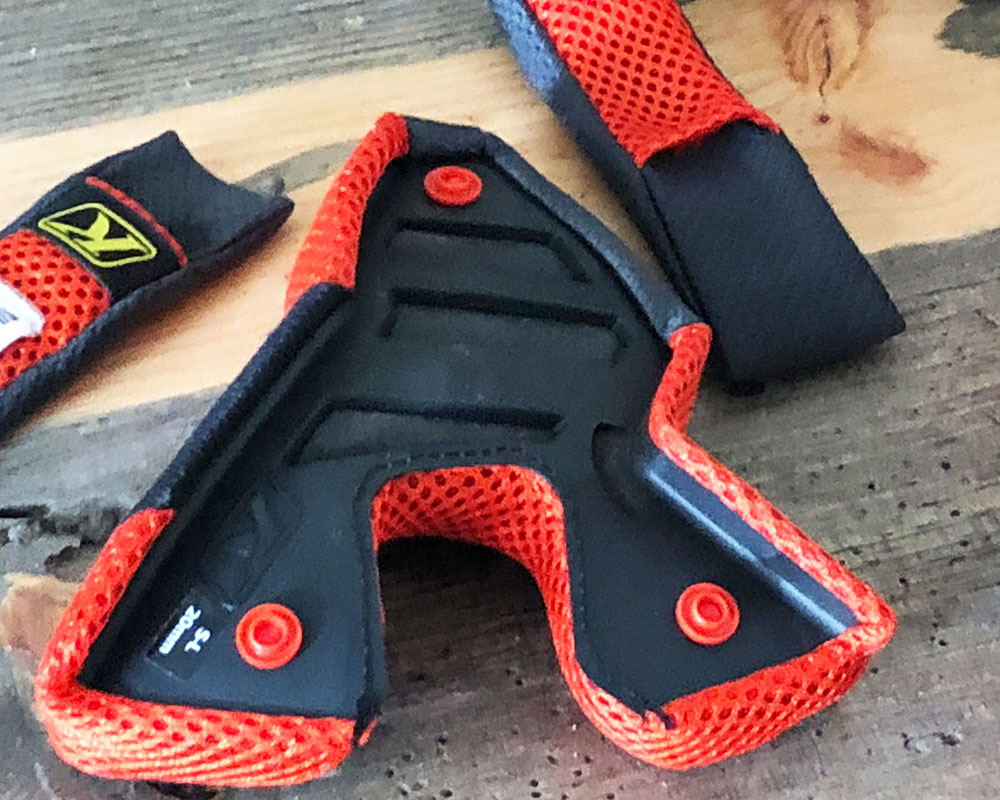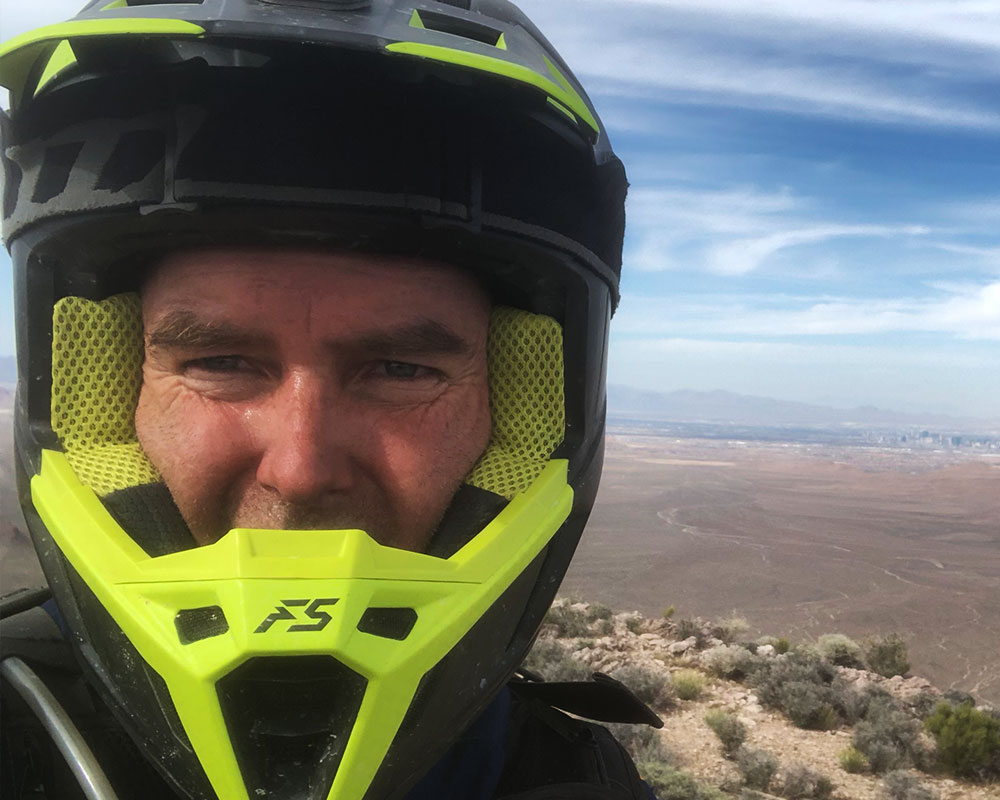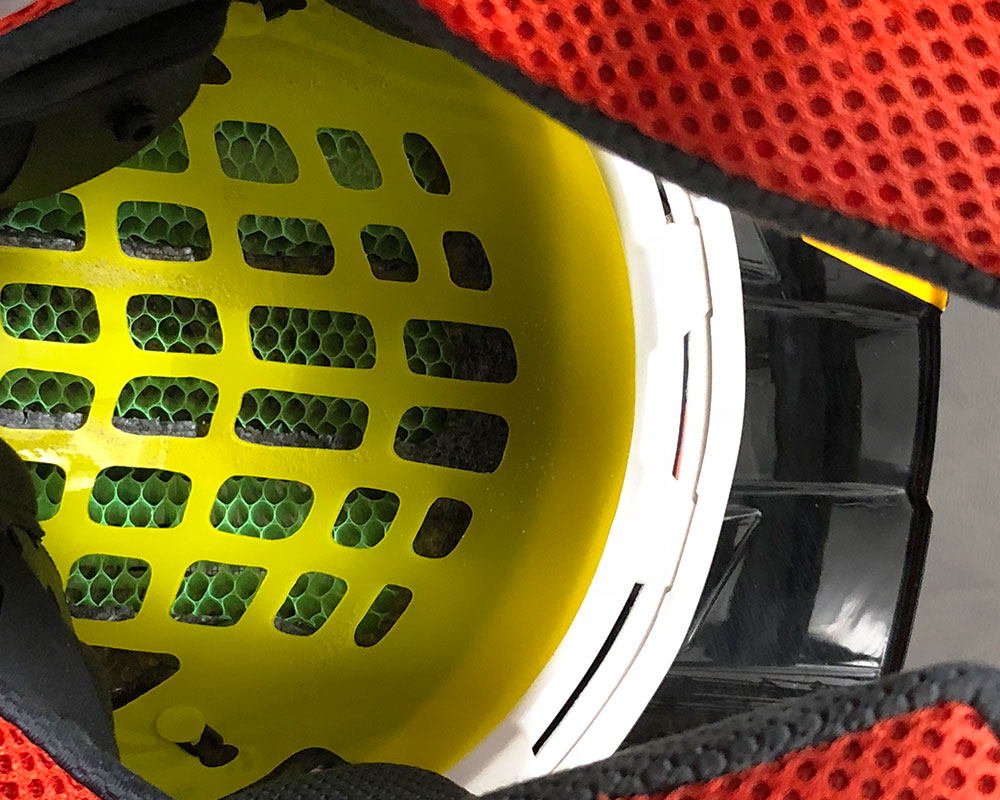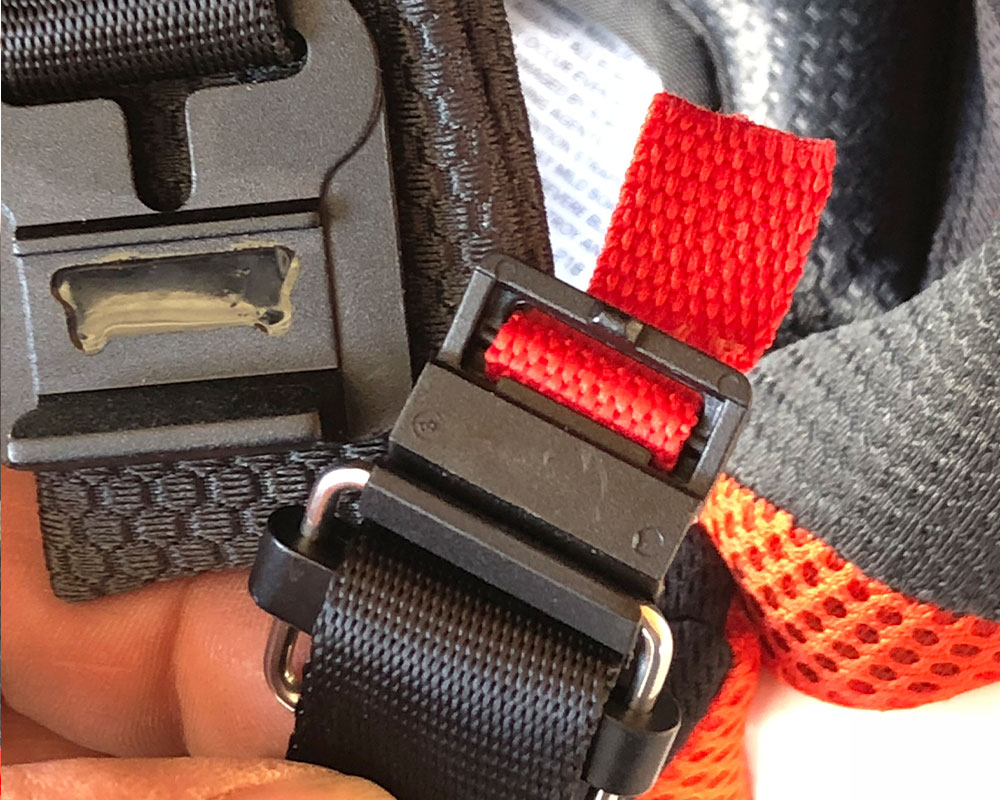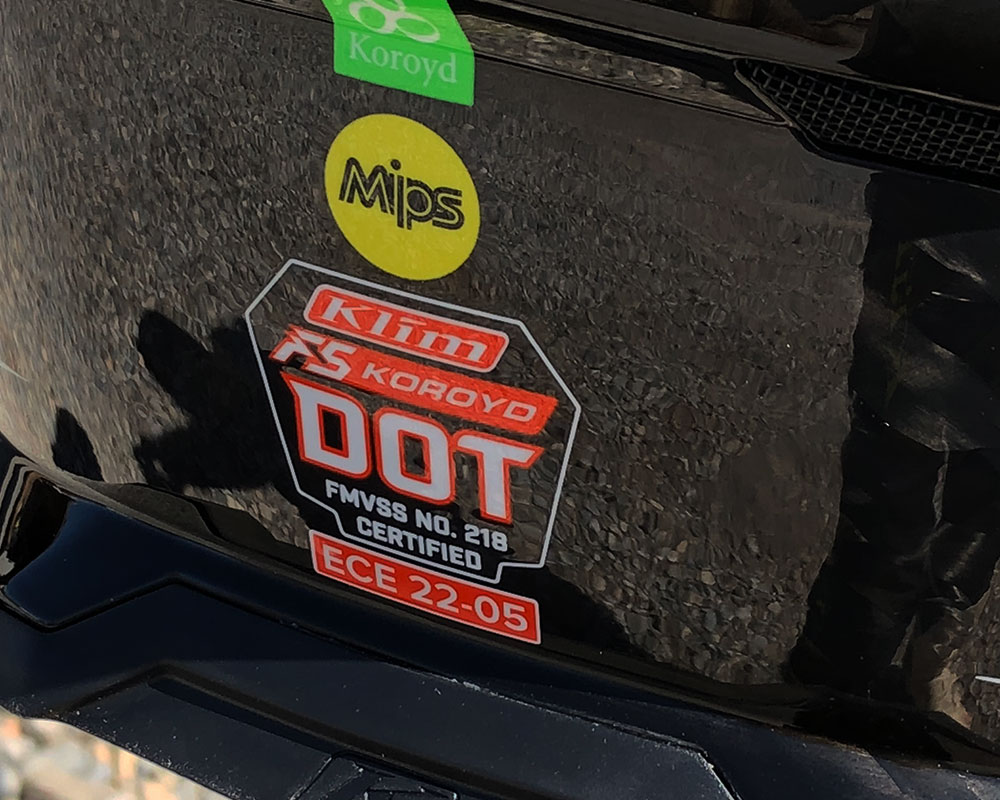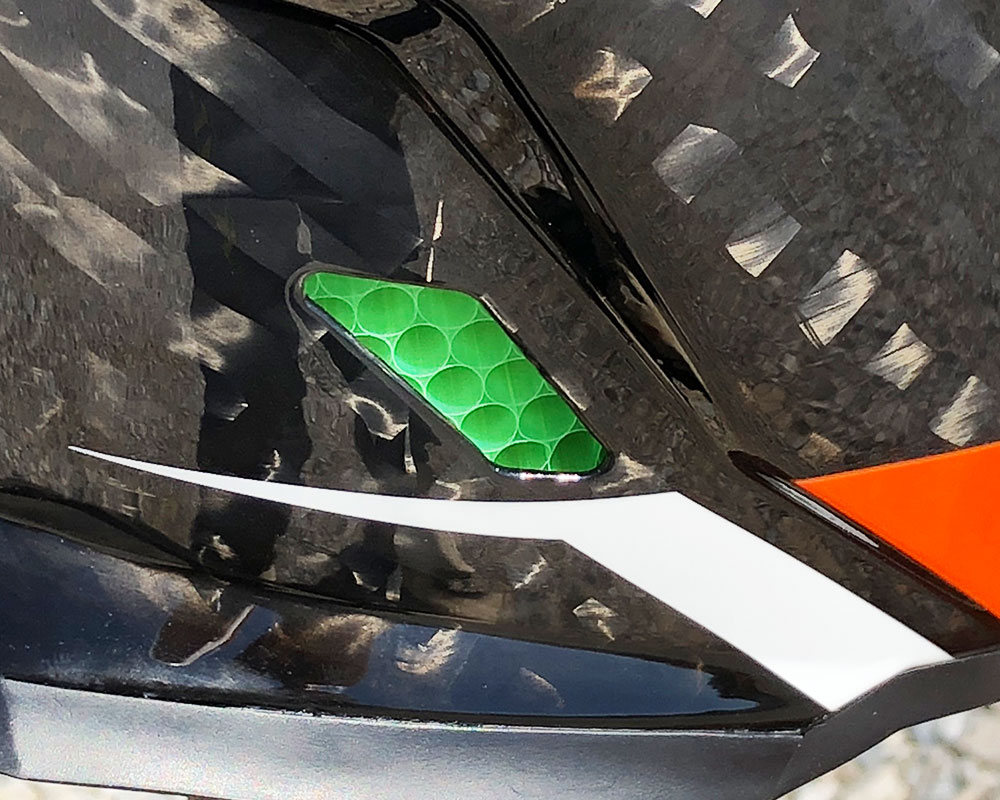Klim F5 Koroyd Helmet
Company: Klim
Price: $649.99
- Lightweight.
- Excellent and tight fit.
- Latest technologies for safety.
- Top end price.
- Limited styles.
What it is
- The latest motorcycle helmet from Klim with an all-new cushioning material.
The Klim F5 Koroyd helmet is made with a carbon fiber shell giving it the super lightweight feel, reduced weight and enhanced ventilation while having both the DOT and ECE certification. The big change from the standard F5 is the use of a new material in addition to the multi-density EPS foam. Koroyd® is a next generation energy absorbing technology, engineered with a unique structure and innovative energy management properties. When impacted the Koroyd cores crush homogeneously, decelerating the energy from the impact. Also used is MIPS® brain protection system which is a low-friction layer designed to reduce rotational motion from angled impacts the head.
This F5 features 18 intakes and 8 exhaust vents. The plumbing inside the shell is designed to help with the direction of airflow. The exhaust vents are meant to help with the escape of hot air inside the helmet at low speeds and the Koroyd materila is like a bunch of mini vent tubes. Klim really wanted to focus on keeping a rider’s head cool and dry with a Drylex comfort liner that is soft and wicks moisture. Unlike the older klim helmets that used scoops, this one does not. So the days of hooking on branches and getting caught are gone.
With all this ventilation winter time riding and how waterproof the helmet would be was a big question. Not to worry. To combat this Klim included in the helmet bag, a Gore Tex Windstopper liner which is easily applied in between the liner and the helmet. It’s a cloth-like material that is waterproof as well. This windstopper is intended to shut off all the vents allowing your head to stay warm and keep your head dry.
The windscreen is another feature the F5 offers. To attach it you simply take out the cheek pads, which are held in place by snaps, and snap in the windscreen in the same area as the cheek pads, and then snap the cheek pads back into place.
A very unique feature Klim integrated into the F5 is the Fidlock magnetic chinstrap. The magnet within the Fidlock system is there simply to guide the strap into place. It’s held in place mechanically by a locking mechanism. This is meant to make taking the helmet on and off quick and easy.
For more info see: https://www.klim.com/off-road/mens/Helmets
How it works
- Meets ECE and DOT standards.
- Good fit for more oval headshapes with sizing that runs just a bit large.
- Koroyd really worked in a crash we had.
Helmets are very hard to test properly. Unfortunately you have to use them to truly test them and if you test them for what they are designed, who’s to say if you really “tested” the helmet. Was that crash like the one I’m going to have? Great way to start a helmet test, but I can say that I tested this helmet to a level I feel very comfortable giving it high marks for protection. More on that later.
I judge helmets on a few criteria. First is fit. Fit is the most important thing in making sure the helmet performs as good as it can in the event of a crash. It can’t be too loose and I won’t even bother if it is uncomfortable as I have to wear helmets for a long time on rides. I have true medium sized head and a typical oval shaped head. For reference I fit best in Arai, Newer generation Bell helmets as well as Vemar, Fox and Fly helmets. Shoei, older Bell and older Klim Helmets were too round.
My second judgement comes on the weight of the helmet. No matter what, the lighter the better as long as it meets my next criteria,
Third and very important is understanding and knowing the safety standards the helmet meets and how I will use it in relation to how safe the helmet may be. I tend to prefer an ECE rated helmet (usually lighter with a thinner and lighter shell) but then adding the DOT and even Snell can either help or hurt based on my personal opinion from years of learning both practical and theoretical. I wish there were a specific off-road helmet safety rating but not just yet.
Price has no correlation to safety that I have ever seen--but I know that my wallet feels it. And you have to be able to pony up for another helmet when you use the one you just paid for, even at $650. Helmets no matter the price are one-time use items. Let me state this again. Price has no bearing on the safety of the helmet, and should only be considered if you need to replace it. I’ve seen plenty of $200 helmets outperform $600 helmets in standardized tests. Yet I have never felt the difference in the price when I’ve crashed and used a helmet. I can feel when different materials are used and some "cheap" materials, especially in the shell, can be detrimental. This pisses a lot of people off and is a bold statement, but it is what I know and have experienced over the years. And I will bring that up no matter the retail price of the helmet I’m testing, in this case the most expensive dirt bike helmet I’ve used.
The F5 has a very comfortable shape while still staying snug, it a slightly oval shape which is a more common head shape in the US. Some found the helmet to be uncomfortable, usually the cheek pads were tight for them. The fit is just a bit larger than the norm as I was between a Medium, my normal size and a Small. I ended up wearing a small and as soon as the cheek pads broke in it was as comfortable and snug as it should be without being too tight. Always remember the importance of fit.
The ventilation of the helmet adds to the comfort as well. You will feel as if you have never worn a truly vented helmet after wearing this one. It flows even more the the standard F5 due to the hollow, tube like Koroyd sections.The 18 intake ports and 8 exhaust vents worked amazing. High speeds were not a necessity for the ventilation to work, the vents allowed for hot air to escape keeping my head cool. This also let a fair amount of dirt in, so getting roosted leaves dirt inside the helmet, even in the back.
The Gore Tex liner did exactly what Klim said it would do. Riding with it placed inside the helmet I could not feel any airflow at all. It also made it significantly warmer inside the helmet making it perfect for very cold situations. To test the water proof factor we put the helmet on and dumped water on the wearer’s head. Head stayed dry but water will drip around the collar of the helmet.
The windscreen was simple to use in very cold conditions. Even with how big the inner flap-like device was it didn’t look terrible but it makes a tight fit with larger framed goggles, including Klim Goggles. This feature is definitely a must for below freezing temperatures and comes from Klim’s extensive snow machine riding gear knowledge.
The removable liner was simple enough to extract for washing it and the helmet. The cheek pads had three snaps each that came off with little effort, and went back into place easy as well due to the design of the pads and helmet. They form really well together. The liner was a little more difficult to remove as the buttons can be tight. They were also easy enough to get back into place.
Attachment and detachment of the visor is quick and easy, no tools needed. There are three total screws, one on each side of the visor and one in the middle. The two screws on either side tighten and loosen easily by hand and do not need to be cranked down. The middle screw just needs to be snug so they all work together to allow the visor to be adjusted to the riders personal needs or moved down for riding into the sun. In the fancy Klim bag the F5 comes with there is extra hardware and a spare visor in case things get a little too wild on the trail.
The Fidlock chinstrap system is a little different than traditional D-Loops. We were a little hesitant about the chinstrap at first. But it is a game changer. In reality I hate grabbing another helmet because I know I will have to buckle it. It is like electric starting on a motorcycle, it is that good. How well can a little magnet really hold something in place? Aside from the small easy pull strap I could not find any other way to disconnect the strap. It does take a few practice runs to learn the placement to get it to snap together, but once you’ve learned it, forget the old way. One of the best features for a helmet!
Durability wise the helmet is high quality and has resisted most typical issues in the year of abuse we’ve dished out to three different helmets. Though the matte Carbon finish did show scratches more than a gloss finish, the paint and graphics were tight. The liner withstood abuse and many washings including some with a pressure washer. The visor is just flexible enough to be breakage resistant but not too much should you need it to break in a crash.
And now the crash report. I had a really good hit in one helmet and a few minor ones in another helmet. The big impact was an over-the-bars header after a mis-judged sand dune crest. Not pretty and very violent with my head making first contact with the ground right at the top of the helmet where the visor connects. The kind of crash they say a neck brace becomes very useful for, and I was not wearing one of those. I stuck the ground and I knew I hit my head right away. No loss of consciousness but just enough stars to know it was a good one. Resulting in a bruise on my forehead, some very light bleeding on the impact zone and a sore spot for a few days. Inspection of the helmet (pictures included) showed the Koroyd and the EPS compressed a significant amount, as they should, and this helmet did its job. The visor cracked but stayed attached and was still in one piece. On the smaller impacts one a side glancing hit the MIPS might have played a role. There was no true way of knowing but the impact seemed like it should have been worse based on what my body felt. Small scratches and no internal helmet damage could be identified.
The F5 Koroyd is a little heavier than the standard F5 due to the thicker shell needed to pass DOT tests, it is 3lb. 2.8 oz. in a Medium compared to 2lb. 11oz. for Medium standard F5. Still a pretty feathery helmet for a DOT lid. It is priced at the top of the market at $649.99 and has enough features and quality to back it up. In everyday use the Fidlock chinstrap will make other helmets feel like they are from the 1970s, the internal comfort will please your cranium and the light weight a welcoming feature that helps with fatigue and safety. Venting is second to none. And we trust the technology built into the helmet and the safety standards the helmet passes. We even proved it to ourselves but with the disclaimer that every crash is unique so you can’t base everything on one big crash. If you can shell out the cash, Klim delivers one of the best helmets on the market.
Here is a test of the standard Klim F5: https://dirtbiketest.com/product-tests/klim-f5-helmet/
Support DBT by shopping through links below:
Leave a Reply
